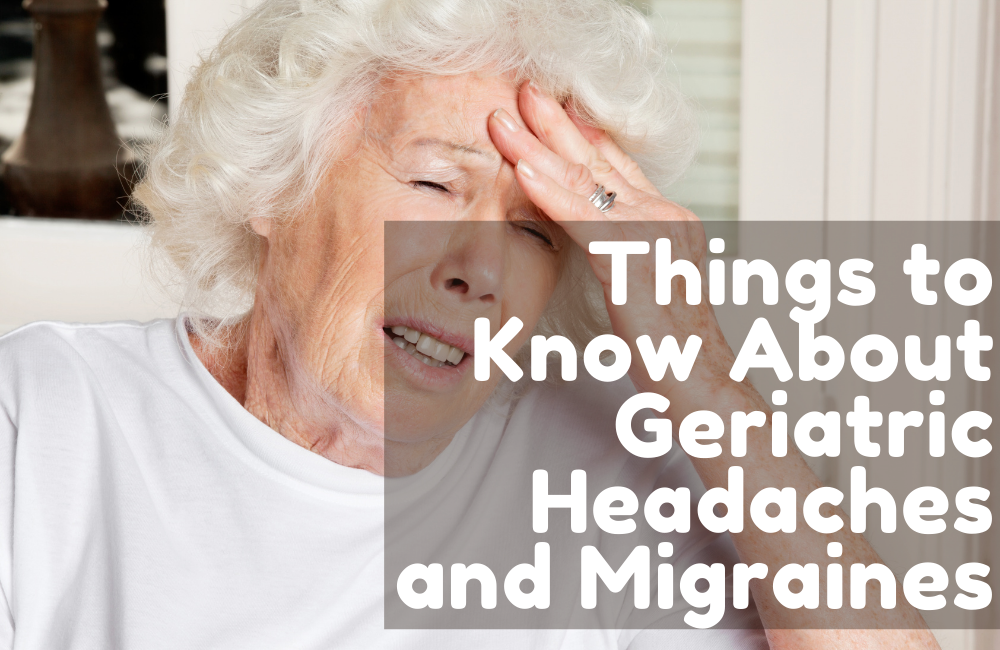Nothing can be more detrimental to your day than an unrelenting headache or migraine. While the two are different, the effects and inconveniences you suffer are mostly the same. It can be impossible to go about your day when you’re dealing with either. Now just imagine being a senior and having to deal with it.
While headaches and migraines can be a sign of a more serious medical concern, there are times when it is caused by an elderly person’s surroundings or bad habits. If left untreated, these painful bouts can severely affect their health and well-being. This is why it’s important to know everything you can about geriatric headaches and migraines to be able to help them.
What is the Difference Between a Headache and a Migraine?
Headaches and migraines can be hard to differentiate especially when you’re the one experiencing them. However, you will be able to better understand and help a senior manage the two if you know the difference. Headaches often involve pressure and aching in the head, while migraines can just feel like a “bad headache.” The problem is that migraines might be caused by a neurological disorder that can lead to more symptoms.
Some common types of headaches are the following:
- Tension headaches – triggered by stress, muscle strain, and anxiety
- Cluster headaches – severe headaches that occur on one side of the head and happen in clusters with headache-free periods in between
- Sinus headaches – often occur with allergy or sinus symptoms
Migraines, on the other hand, cause moderate to severe head pain, often happen on one side of the head along with other incapacitating symptoms like the following:
- Sensitivity to light or sound
- Nausea and vomiting
- Pain in the temples
- Pain behind one eye or ear
- Temporary vision loss
Other signs that it’s a migraine rather than a headache are sensations—an aura—a person experiences before the migraine sets in. These sensations include:
- Feelings of “brain fog” or confusion
- Seeing spots, unusual lines, or flashing lights
- Tingling or numbness in the face or hands
- Unusual sense of smell, taste, or touch
Managing Headache and Migraines in Seniors
Keep a Headache Journal
Once or twice is not necessarily a cause for alarm, but more than that is something you need to observe and document. With a headache journal, you can help your loved one keep track of symptoms, causes, and developments. It’s important to note things like when and what they were doing at the time the pain set in.
Identifying Triggers
From the journal, identifying triggers may be as simple as certain smells or odors, food, specific activities, and so on. You need to be able to help them adopt healthier habits as well as drop potentially harmful habits when they need to. Identifying triggers is important in preventing future headaches and migraines.
Some common triggers to watch out for are the following:
- Weather changes
- Caffeine
- Alcohol
- Sleep patterns
- Stress
- Anxiety
- Strong smells
- Bright lights
- Loud noises
- Dehydration
Conclusion
Helping your elders and loved ones manage head pain will not be just one easy fix. It may require medication or lifestyle changes, or both. Seniors will need your help and guidance to follow through with the treatment plan. You must be able to work with them in order to improve their quality of life. The key is keeping track of their triggers, minimizing those, and maintaining an environment they’re comfortable in.
Caring for a senior loved one can be challenging. However, with professional help, you can ensure their safety and comfort even when you’re not around. Bridge Home Health provides the best homecare services for seniors in California. Our staff is a team of professionally trained and licensed individuals well versed in the care and needs of seniors.

